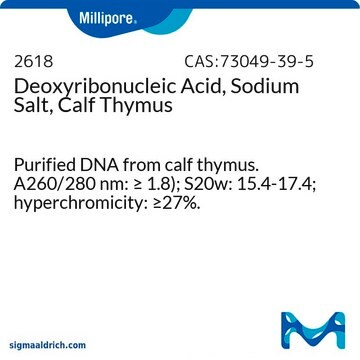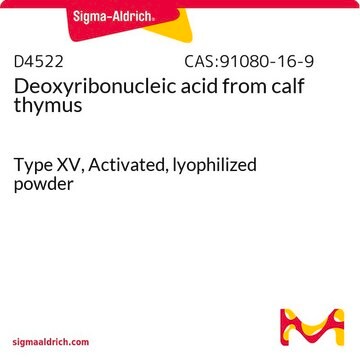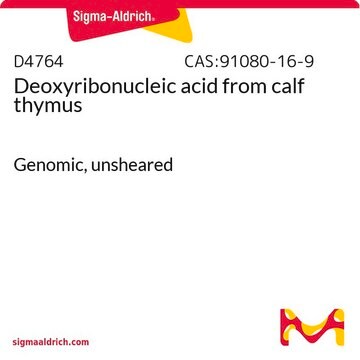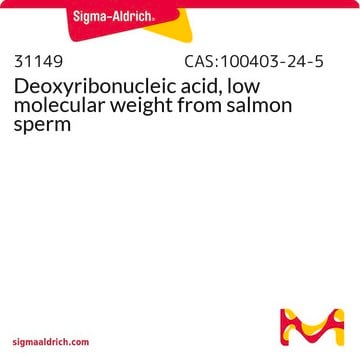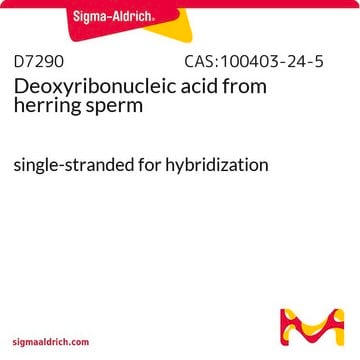D1501
Deoxyribonucleic acid sodium salt from calf thymus
Type I, fibers
Sinonimo/i:
ctDNA, DNA sodium salt from calf thymus, Thymonucleic acid sodium salt
About This Item
Prodotti consigliati
Tipo
Type I
Forma fisica
fibers
Colore
white
Temperatura di conservazione
2-8°C
Cerchi prodotti simili? Visita Guida al confronto tra prodotti
Categorie correlate
Applicazioni
Qualità
Proprietà fisiche
DNA from calf thymus is 41.9 mole % G-C and 58.1 mole % A-T.1 An OD of 1.0 at 260 nm corresponds to ~ 50 μg of double-stranded DNA.
Stato fisico
Nota sulla preparazione
Ricostituzione
Codice della classe di stoccaggio
11 - Combustible Solids
Classe di pericolosità dell'acqua (WGK)
WGK 3
Punto d’infiammabilità (°F)
Not applicable
Punto d’infiammabilità (°C)
Not applicable
Dispositivi di protezione individuale
Eyeshields, Gloves, type N95 (US)
Certificati d'analisi (COA)
Cerca il Certificati d'analisi (COA) digitando il numero di lotto/batch corrispondente. I numeri di lotto o di batch sono stampati sull'etichetta dei prodotti dopo la parola ‘Lotto’ o ‘Batch’.
Possiedi già questo prodotto?
I documenti relativi ai prodotti acquistati recentemente sono disponibili nell’Archivio dei documenti.
I clienti hanno visto anche
Protocolli
Spectrophotometric assay at 260 nm measures nuclease S1 activity, vital for nucleic acid research, with defined enzyme unit criteria.
Il team dei nostri ricercatori vanta grande esperienza in tutte le aree della ricerca quali Life Science, scienza dei materiali, sintesi chimica, cromatografia, discipline analitiche, ecc..
Contatta l'Assistenza Tecnica.